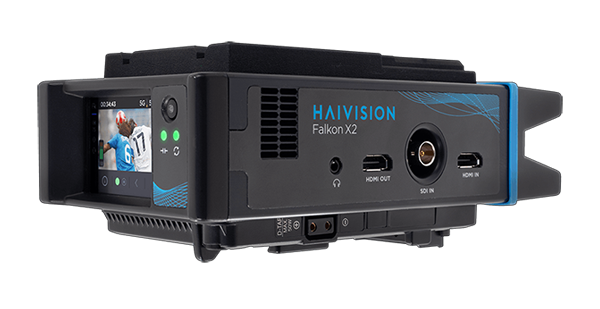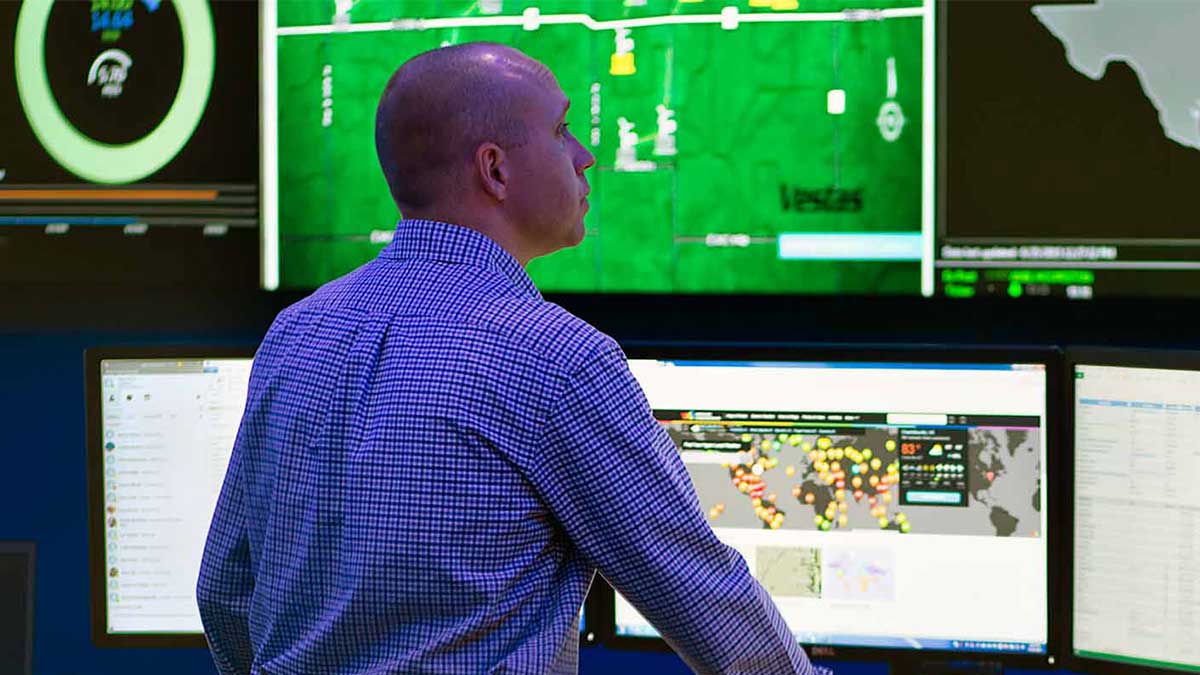Video wall controllers play an indispensable role in the video wall solution in your operation center. Also known as video wall processors, these devices are the backbone of any video wall system, managing and displaying content seamlessly across multiple screens. Their importance cannot be overstated, as they ensure high-quality, synchronized content presentation that is vital for enterprise, government, utilities, and public safety processes and workflows.
What is a Video Wall Controller?
In the simplest of terms, a video wall controller (or video wall processor) is a device that manages and powers the content displayed on a video wall. These controllers are pivotal in processing and distributing various video sources to the appropriate screens, ensuring a cohesive and organized display.
Whether it’s a real-time crime center (RTCC) in a police department, network operation center (NOC) at a logistics company, or a global security operation center (GSOC) at a Fortune 100 company, video wall controllers are essential for managing complex visual data.
How Important Are They to the Video Wall Ecosystem?
Video wall controllers are designed to handle multiple video sources, such as cameras, computers, and streaming devices. They control the arrangement and timing of the display on the video wall, ensuring that content is synchronized and displayed in high quality across all screens. This functionality is crucial for maintaining situational awareness and enabling real-time decision-making.
In enterprise settings, video wall controllers facilitate collaboration by allowing multiple teams to view and interact with the same data simultaneously. For instance, in a corporate command center, video wall controllers enable the display of financial data, operational metrics, and live news feeds, all on the same screen array. This display of different content sources enhances decision-making processes and operational efficiency.
When we look at the public sector, video wall controllers can be even more critical. In security operations centers (SOCs), these controllers manage feeds from surveillance cameras, emergency response data, and communication systems. This capability is vital for coordinating responses and ensuring public safety. The ability to display and switch between different video sources quickly can make a significant difference in emergency situations where time is of the essence.
How Do I Choose the Right Video Wall Controller for My Needs?
Choosing the right video wall controller involves assessing your specific needs, such as the industry and primary use, and identifying the types of content you will display. But there are many other factors you should consider:
- Evaluate technical specifications, ensuring the controller supports the required resolution and has the necessary input/output options.
- Consider scalability and flexibility for future expansion and customizable content arrangement.
- Opt for a user-friendly interface with remote management capabilities, and ensure compatibility with existing systems and technologies.
- Look for controllers that support APIs and software integration.
- Choose a vendor that offers reliable technical support and training programs to ensure effective use.
Introducing Haivision Command 360
Video wall controllers play an important role in the Haivision Command 360 video wall solution. Designed to meet the needs of both enterprise and public safety applications, Command 360 offers robust features that support the management of complex video feeds, ensuring high reliability and flexibility.
Command 360 excels in handling multiple video sources, providing seamless control over the display arrangement and ensuring synchronized, high-quality content across all screens. It also enhances collaboration by enabling multiple teams to view and interact with the same data on a video wall display, significantly improving operational efficiency and decision-making in various industries.
- Transportation and crowd control. Command 360 facilitates the real-time monitoring and coordination of traffic and logistics for large city-wide events.
- Emergency Situations. Public safety entities like police and fire departments rely on Command 360 for efficient coordination and management of emergency responses.
- Financial institutions. Banks use Command 360 to monitor security feeds and transaction data, enhancing their ability to respond swiftly to potential threats and ensuring operational integrity.
- Utilities. Uses Command 360 to aid in monitoring and controlling infrastructure, leading to more efficient resource management and quicker response to service disruptions.
This versatility makes the Haivision video wall solution a valuable tool across numerous sectors, ensuring effective and coordinated operations.
The Power Behind the Video Walls
Video wall controllers are the heart of any video wall solution, ensuring high-quality, synchronized content presentation across multiple screens. Their role in enhancing collaboration, improving situational awareness, and enabling real-time decision-making is vital in industries that range from enterprise to public safety.
Haivision’s Command 360 video wall processor stands out as a premier video wall controller, offering advanced features that support the management of complex video feeds, ensuring reliability and flexibility. Learn more.


























